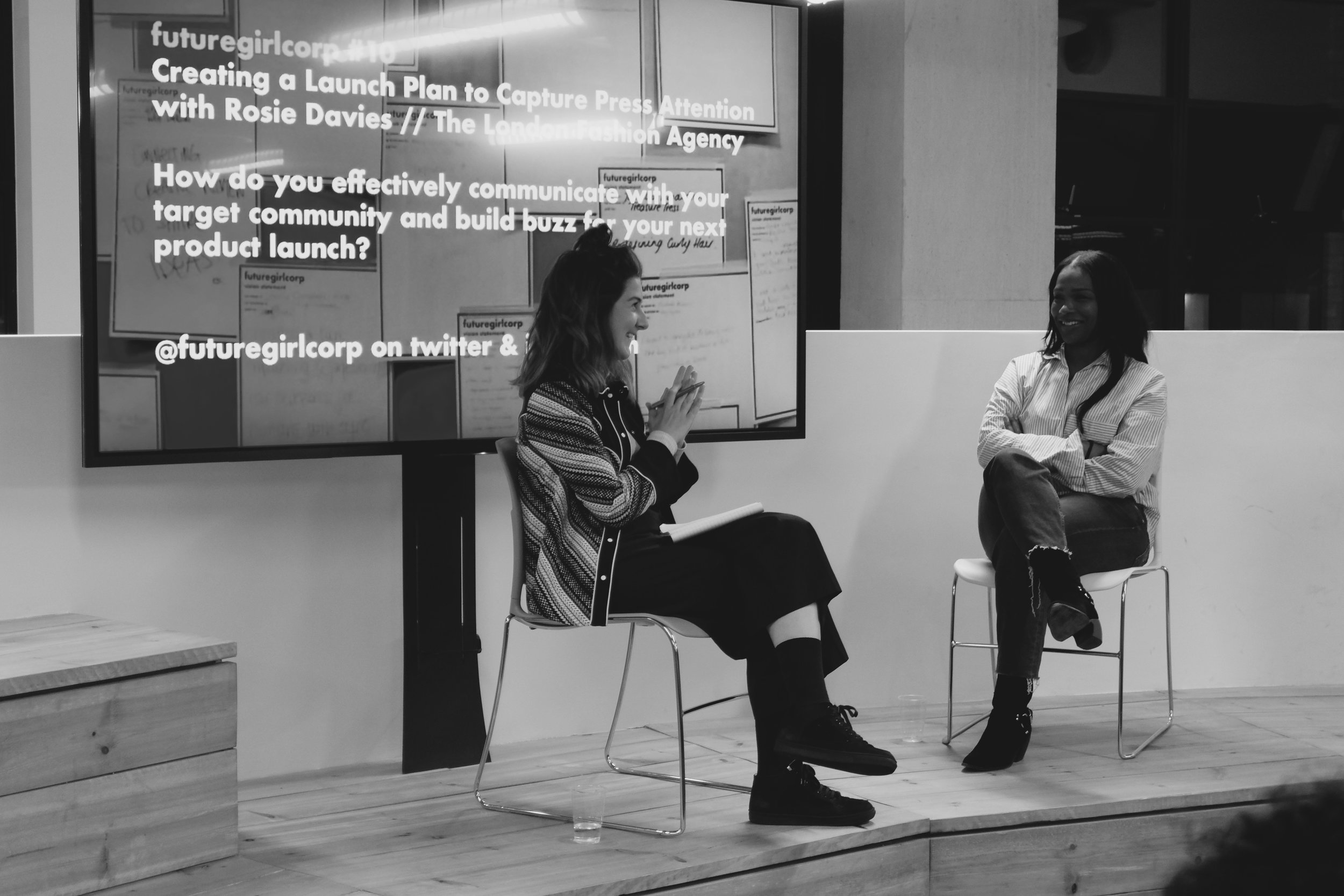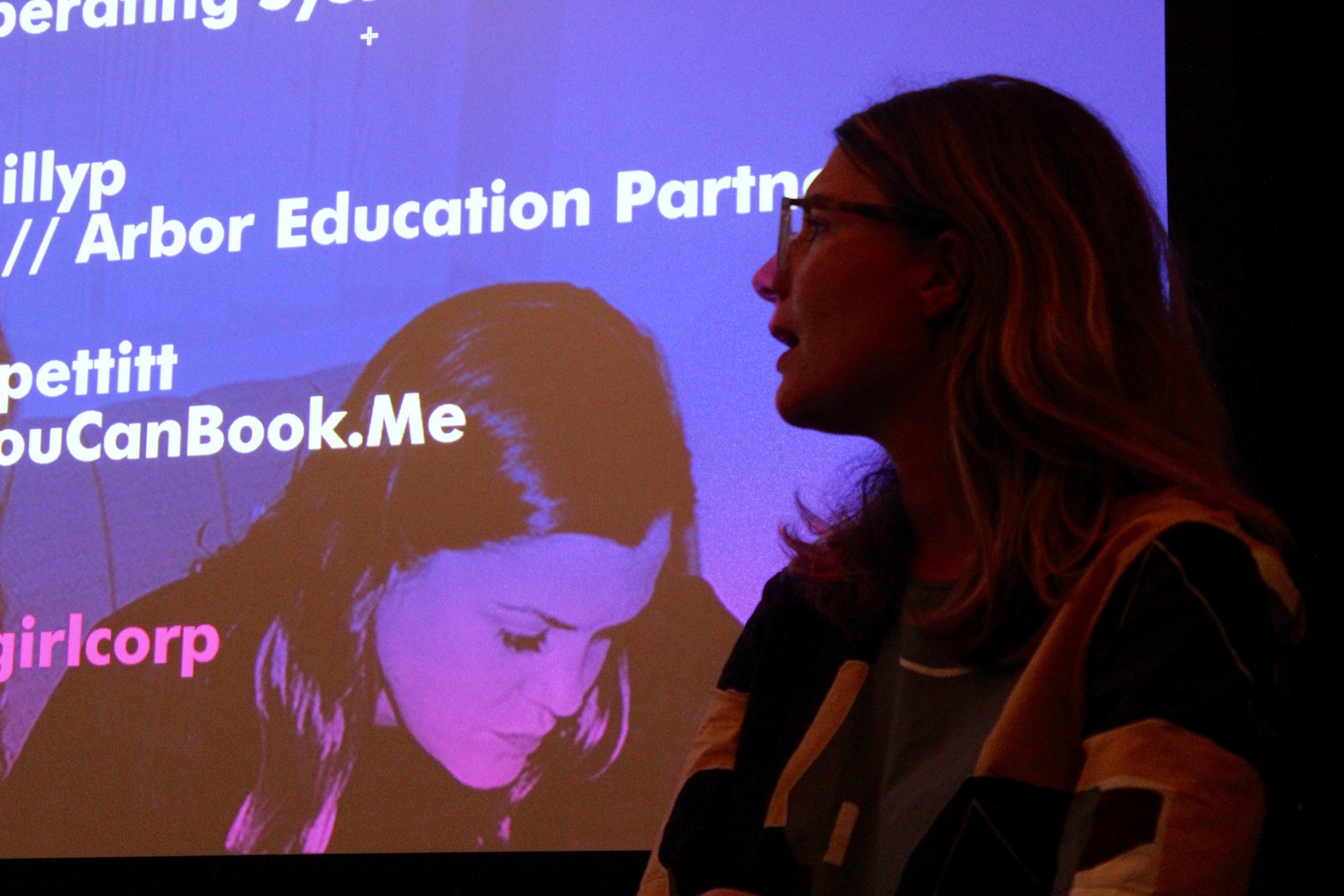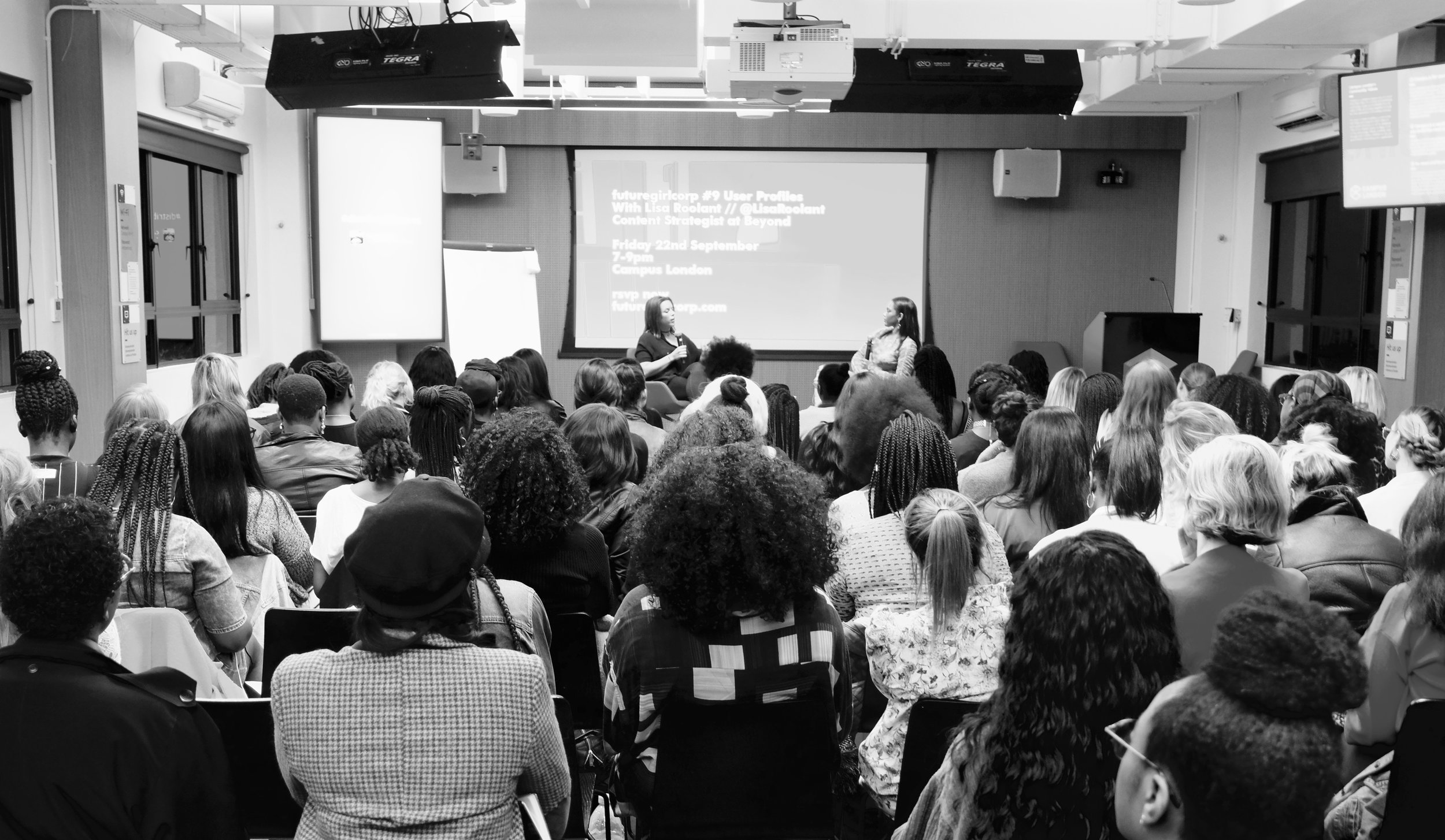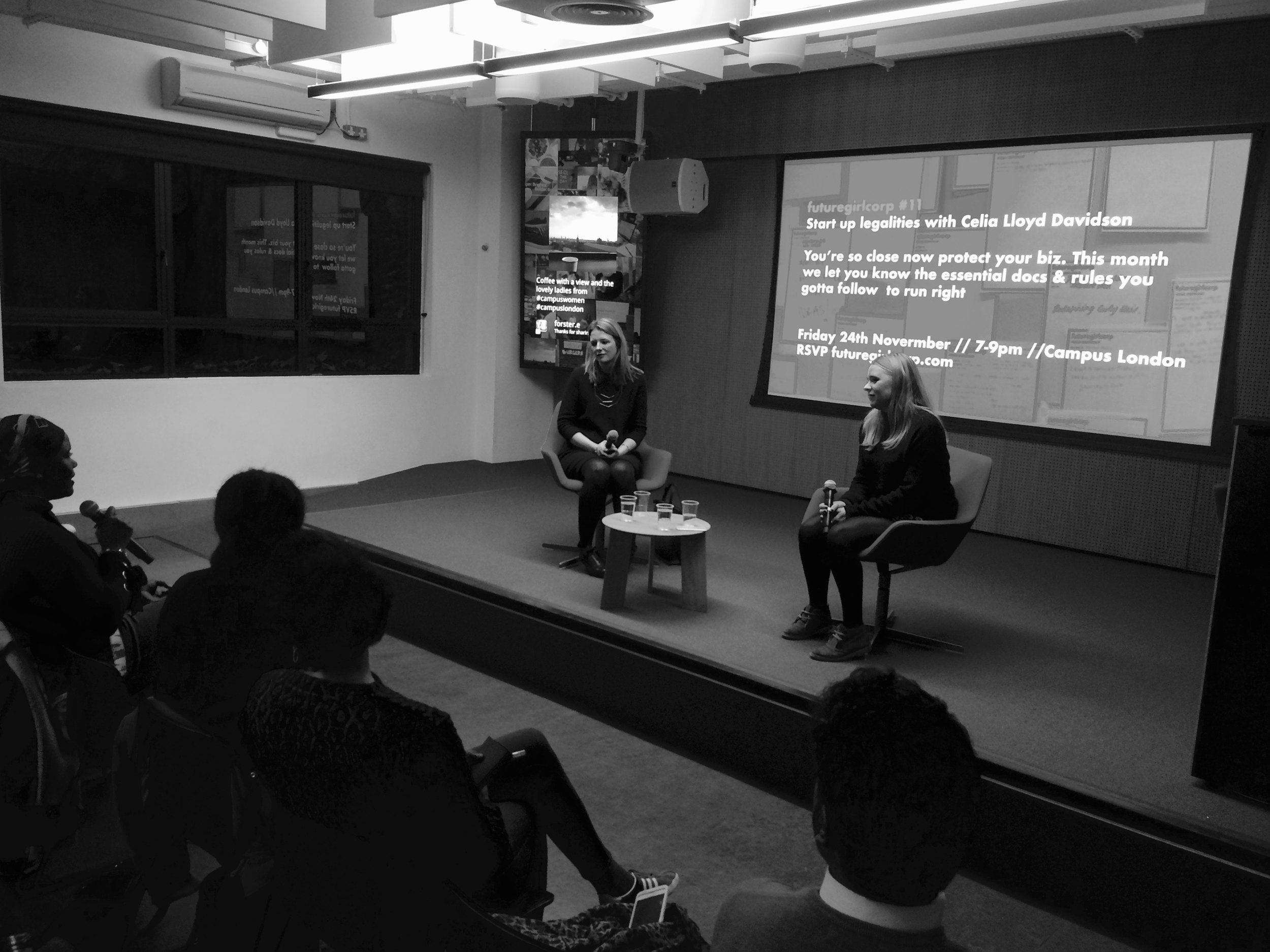Capturing Press Attention

Garnering media attention for your business ain't always easy babes. As luck would have it, we held a panel with Rosie Davies from the London Fashion Agency last month, grabbing the scoop on how to get editors and influencers on your side. Here are 12 tricks to help you make some noise about your brand and get some press coverage on your products or services. You can thank us later ;)
STAGE ONE
...getting all your key assets together!
1. HAVE A SPECIFIC NICHE! Narrow down your focus - being everything to everyone makes it much harder for you to stand out.
2. FIX UP YOUR SEOS! Search Engine Optimisation (SEO) is how Google ranks you on their search pages and therefore how easily someone can find you when they search for something that might link to your brand. There's plenty of free support online in regards your improving your SEO but here are a few key things you can do to keep your SEO in good condition:
- Regularly update your website.
- Label all your images properly, using keywords that get your images to appear on Google Images search. No one is searching for Screenshot985237894729871 so change that up asap.
- Create good content online that links back to other pages on your site.
3. RAISE YOUR INSTAGRAM GAME! Your Instagram is an easy way for people - whether PRs, editors or customers - to get a quick, clear and concise idea of what your company is about. This will often be checked even before your website so you really need to ensure it looks great. Make sure to:
- Create a great, visual story. Check everything you’re putting on your Instagram is beautifully shot and really think about the composition and colour scheme of what you’re posting.
- Post magazine articles on there to get more coverage.
- Include some BTS as further inspiration sources and to involve your audience in the building up of your brand.
“PR in the modern age: it’s not just about calling up magazines anymore because not a lot of people read magazines. It’s about coming up in the [Google search] results. So being able to understand SEO, data labeling, etc.. is an important and essential part of what modern day PR is.” - Sharmadean Reid, Wah London.
4. KEEP UP WITH THE JOURNALISTS! If you want them to notice and engage with your brand, you should be following them on Instagram, Twitter and LinkedIn, liking and commenting on their pages and getting an understanding of what they enjoy writing about. Once you get featured, send a thank you card or gift to maintain a longlasting and positive relationship.
5. SCOPE OUT INFLUENCERS! We can all acknowledge that influencers are essential to marketing right now. When working with them, remember it's a long-term strategy.
- Identify your network of people with influence, not necessarily bloggers but those who have influence in their fields, whether in politics or the art world.
- Make a spreadsheet that keeps all their contact information.
- Figure out who the right influencers are and work with people that actually like the product. It feels more natural and they might endorse it even after the paid posts.
- Invite them to events and follow up on coverage e.g. if they have to post two pictures, stay on their tail to get the job done.
6. CREATE A PRESS KIT! Instead of sending over a press release like everyone else, why not go that bit further and create a beautiful and visually engaging press kit? When trying to get a product shot on a page, the press doesn't really care about the backstory of the brand. They only care about the cutout shot, what your brand looks like and how much it is. Create something inspiring on Indesign so that you can take these journalists on a journey of your brand. It's important to make a good first impression from the start.
Press kits should include:
- Plenty of visuals and less text. It’s essentially storytelling, like creating a deck.
- Details about who you are, what you’re about, what you do, where people can get it and how much it is, any new releases and when they are coming out.
STAGE TWO
...reach out to somebody!
7. COMPILE A TARGET MEDIA LIST! Think about where your brand is going to sit within publications. It's a good idea to start with online and short lead (weekly/daily) publications. Set up a press@yourbrand.com email account and have it listed on online sites like Fashion Monitor so that people can easily get in contact with you.
8. PITCH YOUR IDEA! You need to pitch an angle that works for that particular publication. Hone in on exactly what it is your business offers. Keep it short and sweet, and tell them in 3 lines what your business does and the angle that works for your brand and their publication. Include a link to your website and attach something that they can have a read through e.g. press kit or a mock-up example of the service/product/app. Journalists love stats or great success stories, so if you can include that in there too, even better!
“You have to think about where would the most perfect place for my product be and when is the optimum time to get them… Half the battle of getting people to do what you want is just the time of your approach.” - Sharmadean Reid, WAH London.
9. GET IN THERE EARLY! Be aware that magazines work 4-6 months ahead of when they go live so if you've got a product you'd like to promote at Christmas, you'll need to start contacting editors in the summer. Be smart with your planning and shoot images in the style of that magazine because you'll make their job so much easier. Give them the story and make it super simple for them to feature you.
[SEE PR DISPATCH FOR A FREE PR PLANNING CALENDAR & USE THE CODE FGCFREE TO GET THE FIRST MONTH COMP!]
10. DON'T GET PUSHY! Editors will feature you if it’s relevant but remember that they have themes for every month, so while you might not be right for the particular month you're contacting about, something may come up in the future (hence why your planning is so important). If they agree to include you in a feature, well done! However, it's never confirmed until you see it on the page. Magazines call in a lot of images for a lot of different pages and then they'll have to cut a lot of products, or an advertiser could come in two days before they print and wipe away your page. Don’t get disheartened if you get cut - it’s just part of the business. You can ask them what date it’s going to come out or when it’s going to print but really it's a waiting game.
STAGE THREE
...I've been published, now what?!
11. PR YOUR PR! There is so much information online now that it’s not as easy to cut through the noise. Shout about this feature every which way you can:
- Get that magazine logo on your website - users attribute that to credibility.
- Have a press page. Stockists want to know this information and often ask for a press portfolio when you reach out to them.
- Share the news with your followers on social media and add it to your newsletter.
- Your social media following might go up after a feature so you need to start engaging with this new audience, capturing them from your Instagram and moving them to your website to hit your newsletter sign up.
“It used to be [that] something would go into a magazine and you’d see loads of sales straight away. It is just not like that anymore.” - Rosie Davies, The London Fashion Agency.
12. CREATE A BEAUTIFUL REPORT! It's easy to lose track of all the communication you've done with the press so collating all that information in a simple spreadsheet is really useful. Include every single publication that has been emailed/contacted that month, any particular features you’ve pitched on, any responses, the statuses of pending coverage and the names of everyone who has written a piece on your brand (to thank them later). You can put all that data into a monthly or quarterly report, including the development of your social channels, new influencers or editors to follow and a plan for the next month.
Q&AS
I tried all the emailing and gifting but had no response? What's next?
“I would never ever blast email 30 magazines… Narrow down your list.” - Sharmadean Reid, WAH London.
There is a massive connection between advertisement and press, whereby the advertisers will always get priority over independent brands - that’s just the industry. You have to make your PR mix a balance between socials and magazine coverage. Most importantly, focus on your direct relationship with the consumer.
Also, make sure you curate your outreach list to be the people who are absolutely perfect for your brand. You need to find people that get your vibe. Don’t try to blast out loads of different magazines and hope for a response. Narrow down your list to the top 5 magazines and the actual, exact people who are right for you e.g. stylists, editors, etc…
2. Should you get someone in-house to do your PR?
“I believe the future of PR is doing it yourself, in-house… PR Dispatch - our brand - does that for you.” - Rosie Davies, The London Fashion Agency.
As a founder, you have a very specific way that you'll want everything presented and so it can take a long time to find the right PR agencies to work with. But if marketing or branding isn’t a strength of yours, it is helpful to outsource that. Even if you are good at that stuff, as your company grows you’ll have less time to do it. The benefit of having someone in-house is that their main focus is just you. They are the face of your brand to the industry so they have to dress and talk just like your customer but then also be business minded. Hiring an in-house PR takes a lot of time and effort but it’s worth it.
3. How important is gifting?
“It has to have purpose!” - Rosie Davies, The London Fashion Agency.
Be really strategic about it. Get to know the editors or influencers, follow them on Instagram so you know something about their personal lives and then you can match the gift to a special event e.g. birthdays. Also, if you give them something personalised and the editor features it on their Instagram page rather than in a magazine, it’s just as important. People are following those editors big time, so you’ll undoubtedly still see traction from that.
4. Tradeshows, are they worth it?
“You’ve got to do it at least 3 or 4 times before you’ll see any traction.” - Rosie Davies, The London Fashion Agency.
Buyers have such a small budget now and they are so skeptical about what they are buying. So they'll want to see you at the tradeshow a few times to know that you’re serious about your brand. If you do decide to do it, you have to go in with clear objectives and expectations e.g. brand awareness or sign ups. Otherwise, it’s easy to get disheartened.









